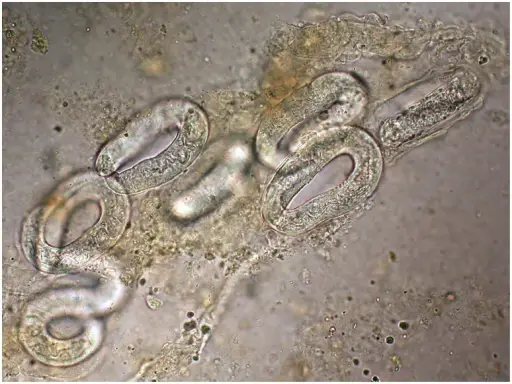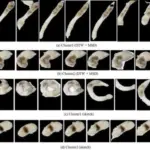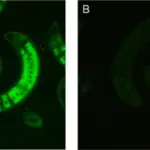Strongyloides Infection is a human pathogenic parasitic roundworm causing the disease strongyloidiasis.
What is the Pathology of Strongyloides Infection?
The pathology of strongyloides infection is:
-Etiology: The cause of strongyloides infection is a parasite.
-Genes involved: Not applicable.
-Pathogenesis: The sequence of events that lead to strongyloides infection includes strongyloides filariform larvae in fecally contaminated ground that penetrate skin, enter the systemic circulation and migrate to the lungs where they induce inflammation.
-Morphology: The morphology associated with strongyloides infection shows female filariform larvae (males are thought to be non-parasitic) are slender and fast-moving, being approximately 50 µm in diameter and between 350-600 µm in length.
-Histology: The histology associated with strongyloides infection shows tissue eosinophilia and granulocytic infiltration that may cause abscess formation are present.
How does Strongyloides Infection Present?
Patients with strongyloides infection typically are all genders of all ages. The symptoms, features, and clinical findings associated with strongyloides infection include heartburn, diarrhea, constipation, a dry cough, skin rashes, abdominal pain, and bloating.
How is Strongyloides Infection Diagnosed?
Strongyloides infection is diagnosed by blood test.
How is Strongyloides Infection Treated?
Strongyloides infection is treated by antiparasitic medication ivermectin, and albendazole.
What is the Prognosis of Strongyloides Infection?
The prognosis of strongyloides infection is good. However, in people with weak immune systems, it can be life-threatening.



